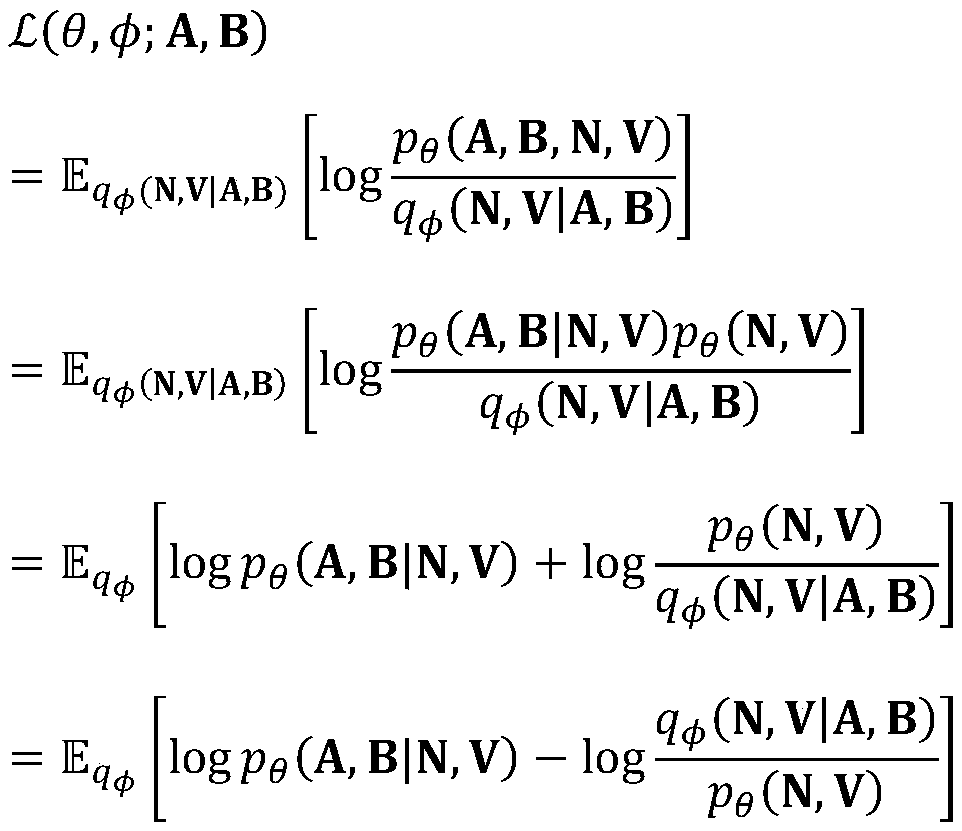Method for constructing joint embedding model based on regular flow automatic encoder
A technology of autoencoder and construction method, which is applied in the field of joint embedding model construction, can solve problems such as calculation and similarity, and achieve good performance
- Summary
- Abstract
- Description
- Claims
- Application Information
AI Technical Summary
Problems solved by technology
Method used
Image
Examples
Embodiment 1
[0054] A method for constructing a joint embedding model based on a regular flow autoencoder, comprising the following steps:
[0055]Step 1. Define symbols and targets: Assuming that the number of nodes and attributes in the network are N and F respectively, then an attribute network can be represented by two matrices: adjacency matrix and the attribute matrix Each row of A represents the out-degree of the corresponding node, and each row of B represents the attributes of the corresponding node; so the goal is to pass the established model To learn the expression of this network in low dimension: node embedding matrix and the attribute embedding matrix Among them, D represents the dimension of the low-dimensional space; each row of N represents the representation of the corresponding node in the low-dimensional space, and each row of V represents the representation of the corresponding attribute in the low-dimensional space; note that the low-dimensional space mentio...
Embodiment 2
[0108] The present embodiment provides to build a neural network for the model of the present invention; including the following steps:
[0109] first:
[0110]
[0111]
[0112]
[0113]
[0114] where ReLU is the activation function, is a symmetric normalized adjacency matrix, and D is a degree matrix.
[0115] H=tanh(B T W 0 +b 0 )
[0116]
[0117]
[0118] h v =HW 3 +b 3
[0119] Where tanh is the activation function, W, b are the weight matrix and bias of the neural network, respectively. Note that the above two H and W are different, and are omitted here only for brevity.
[0120] Then sample:
[0121]
[0122]
[0123] For each function of the regular stream, we implement it like this:
[0124] h 1 =elu(Z (t-1) (M⊙W 0 )+b 0 )+h Z
[0125] h 2 =elu(H 1 (M⊙W 1 )+b 1 )
[0126]
[0127]
[0128]
[0129]
[0130] Among them, ELU and sigmoid are activation functions. Multiply the corresponding elements of M and the...
PUM
 Login to View More
Login to View More Abstract
Description
Claims
Application Information
 Login to View More
Login to View More - R&D
- Intellectual Property
- Life Sciences
- Materials
- Tech Scout
- Unparalleled Data Quality
- Higher Quality Content
- 60% Fewer Hallucinations
Browse by: Latest US Patents, China's latest patents, Technical Efficacy Thesaurus, Application Domain, Technology Topic, Popular Technical Reports.
© 2025 PatSnap. All rights reserved.Legal|Privacy policy|Modern Slavery Act Transparency Statement|Sitemap|About US| Contact US: help@patsnap.com



